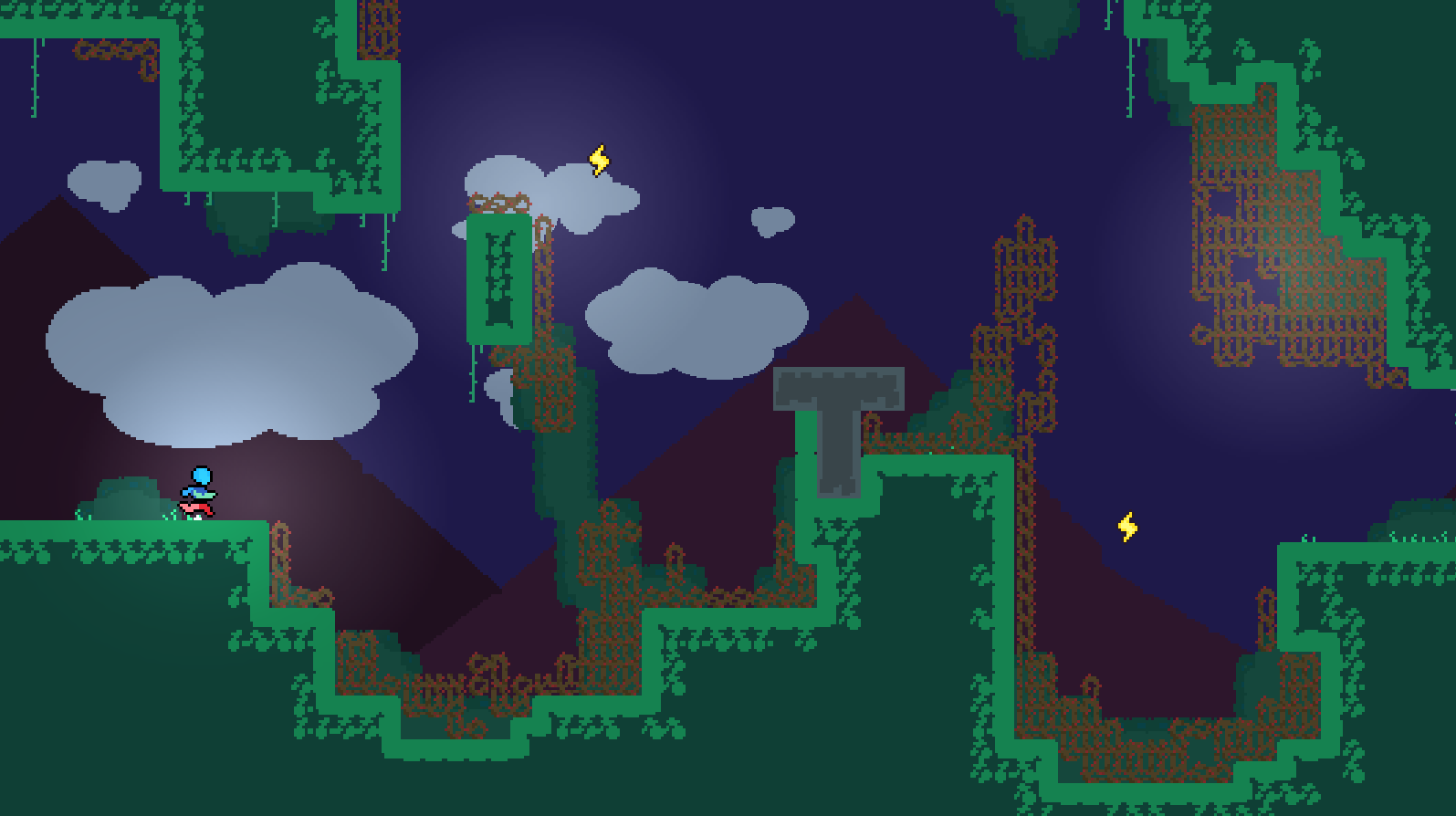
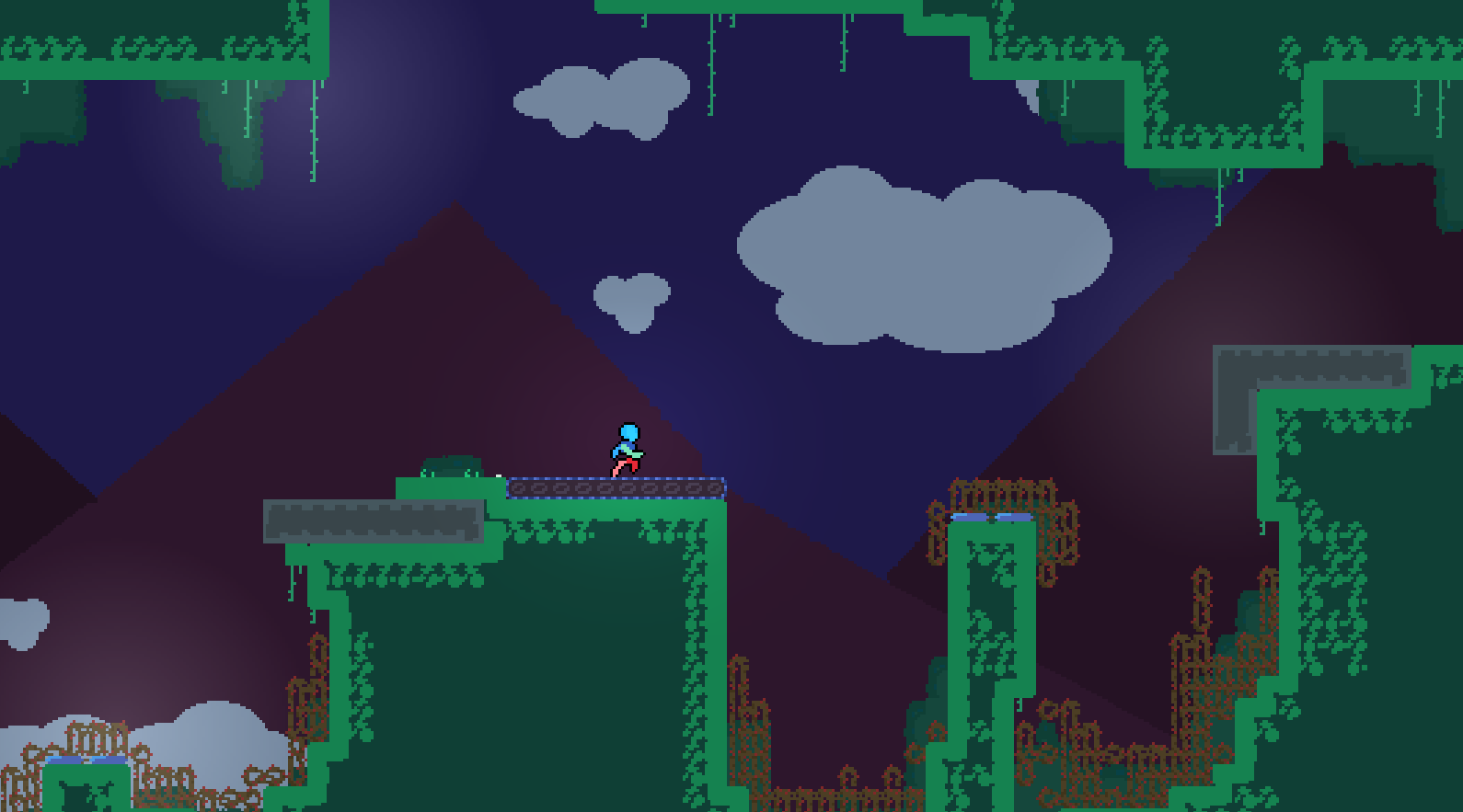
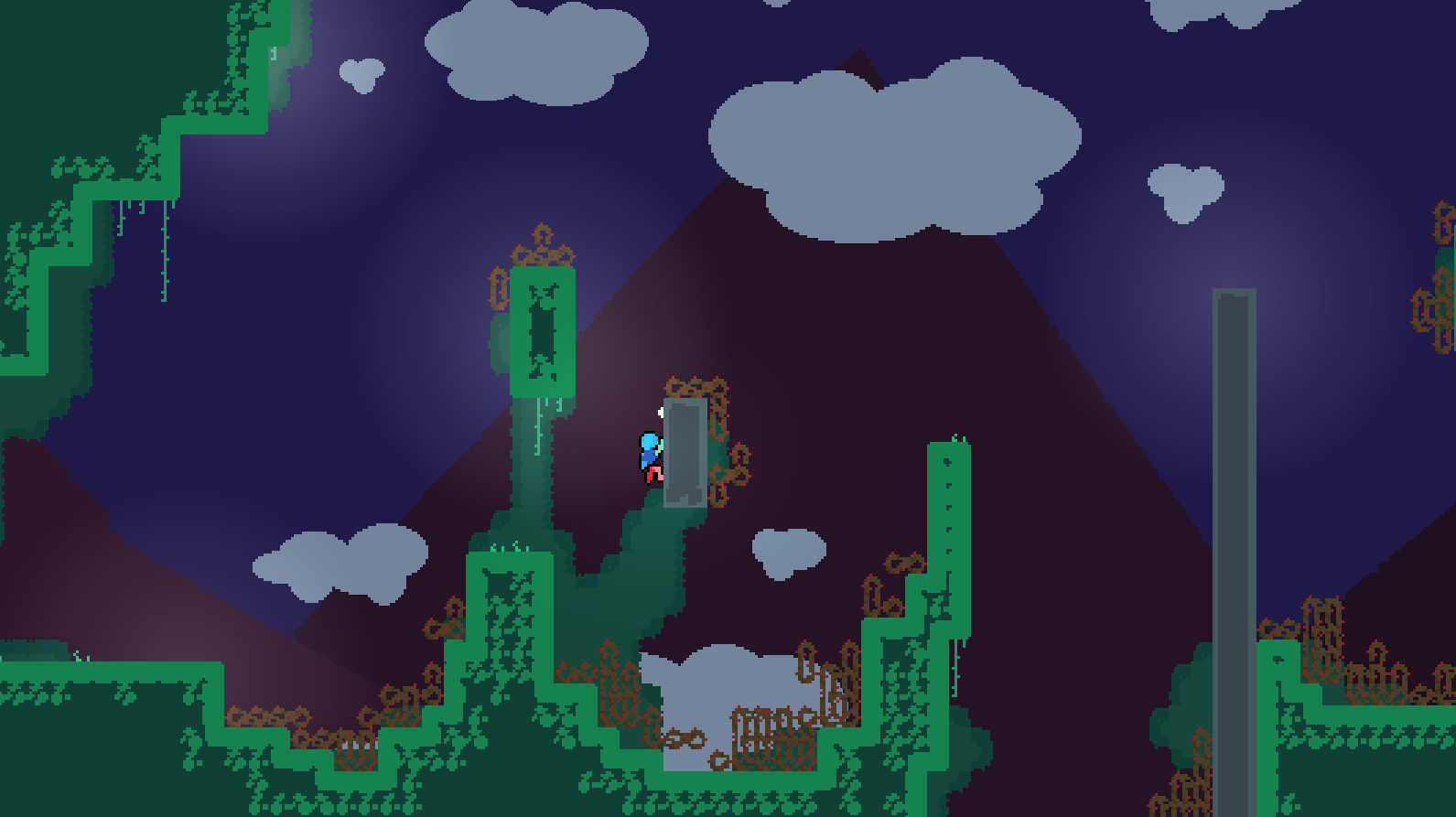
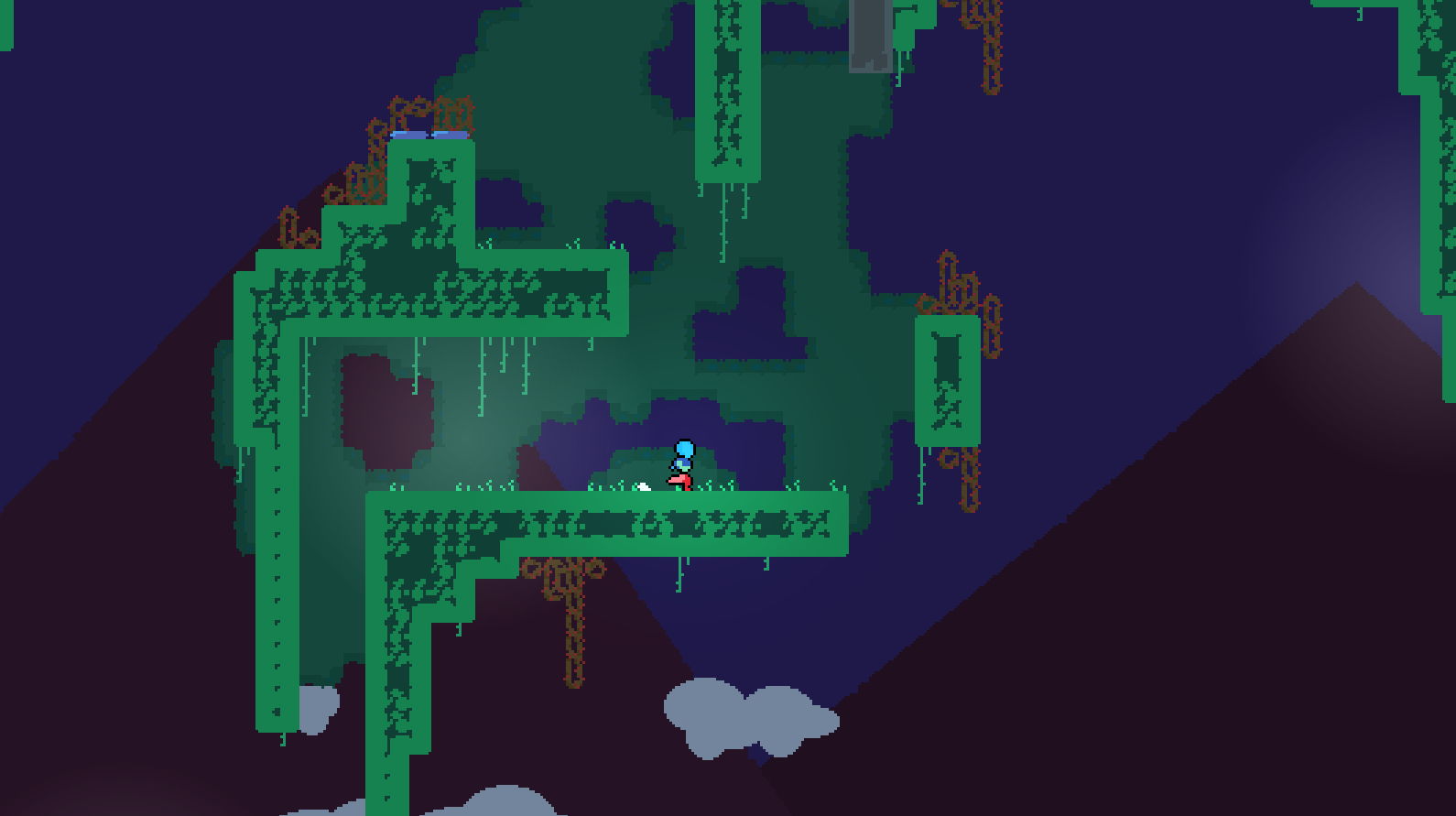
Robot Game (Working Title) is a 2D platformer made in Godot that I have been working on on-and-off for around half a year. The game has many interesting level design and game design considerations. This page talks on the game design of Robot Game, if you would like to read about the level design click here.
Core Considerations
- Design a game with alternative player incentives.
- Design a game that is fun to play, and interesting to think about.
- Imbue the game with thoughtful metaphors and diegetic storytelling.
Ideation and Design Document
The beginning of development for Robot Game takes place before I had the idea for any part of the game, and only knew that I wanted to make another 2D platformer. I went through many different ideation techniques, and even made a couple of prototypes for games that I didn't end up deciding to keep working on. I then had the idea for the character split in two, who could sacrifice the lower half of their body in order to double jump. I instantly fell in love with the idea and started work on a design document, then a playable prototype. In truth, however, I did not conceive this idea during one of my ideation practices but instead while in class at university. Although my ideation processes did not land me on my idea, I believe they got my mind thinking in the right direction and showed me which ideas I did not want to make.
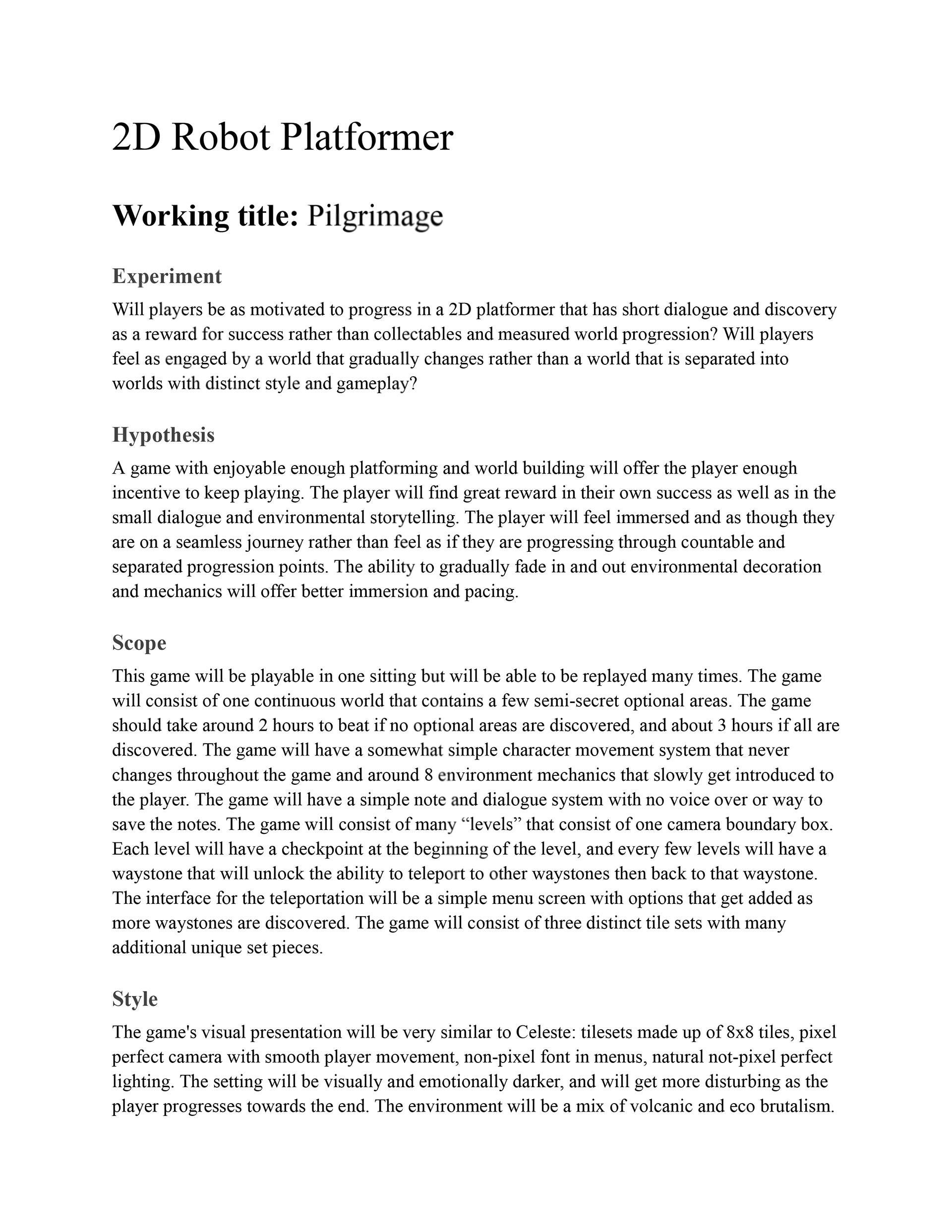
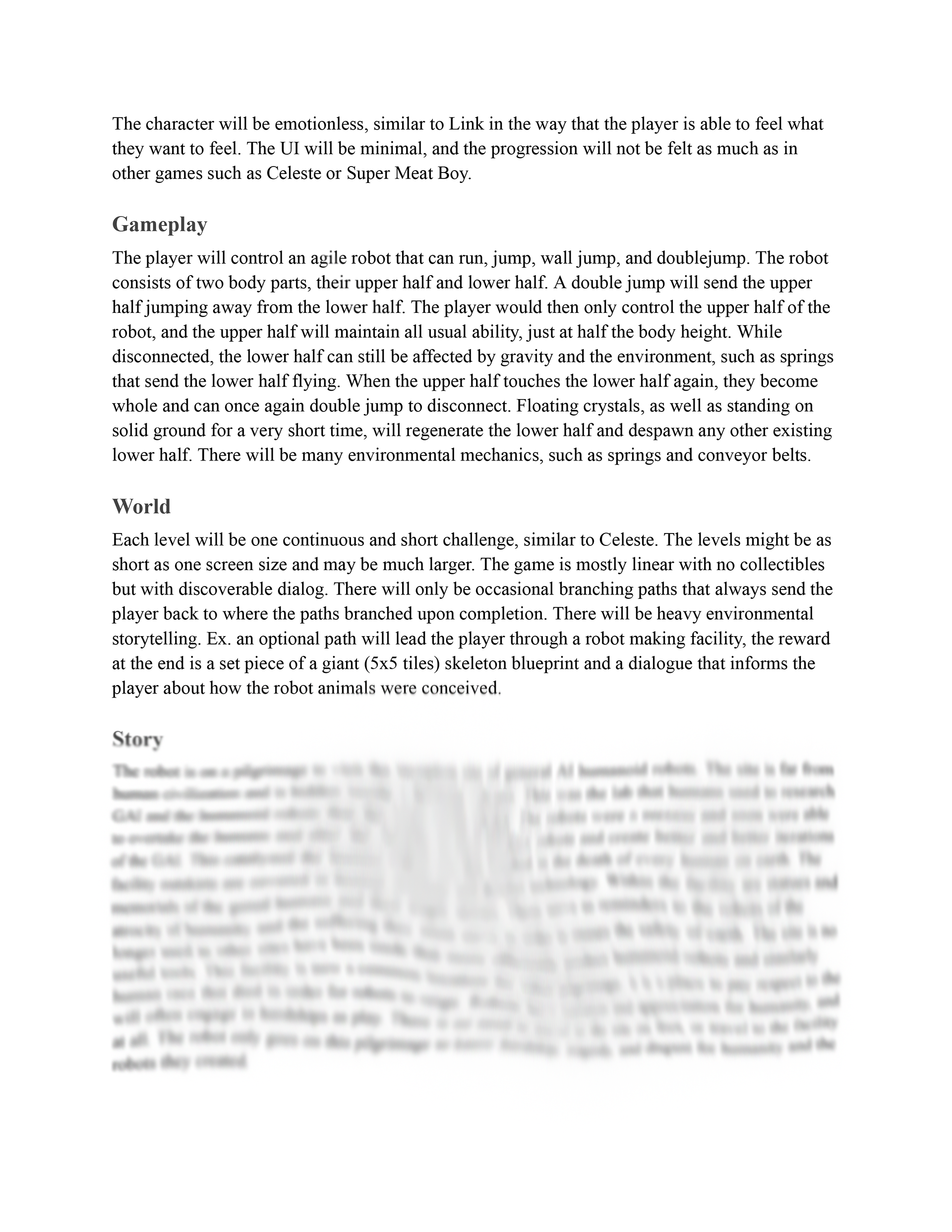
Early on, I decided that the game would not use collectibles like a traditional 2D platformer and opted instead to engage with the player's curiosity as an incentive. Since this is an atypical approach to a platformer, I structured the beginning of my document with an experiment and hypothesis. I will also note that the story section is blurred as to not spoil the story for any future playtesters, since the story is integral to the incentive system.
Piquing the Player's Curiosity
One of the design pillars of Robot Game is "curiosity over collectibles". I want the player to explore this game and trudge through the challenges because they want to see what else the game has in store. This is accomplished in 3 ways:
- Introducing new environmental mechanics, similar to a traditional platformer.
- Hiding interesting set pieces in the level that leave the player curious to solve the world's mysteries.
- A notes system that slowly unravels the story of the world through non-linear journal entries.
That last bullet point is the most important: the use of notes scattered across the world. These notes introduce human characters from before the "catastrophe". They are journal entries from an unknown author, writing about his experience with his colleagues as a horrific event unfolds. The notes are presented to player out of order, and often missing context. This encourages the player to find more notes and gain a deeper understanding of what they are reading.
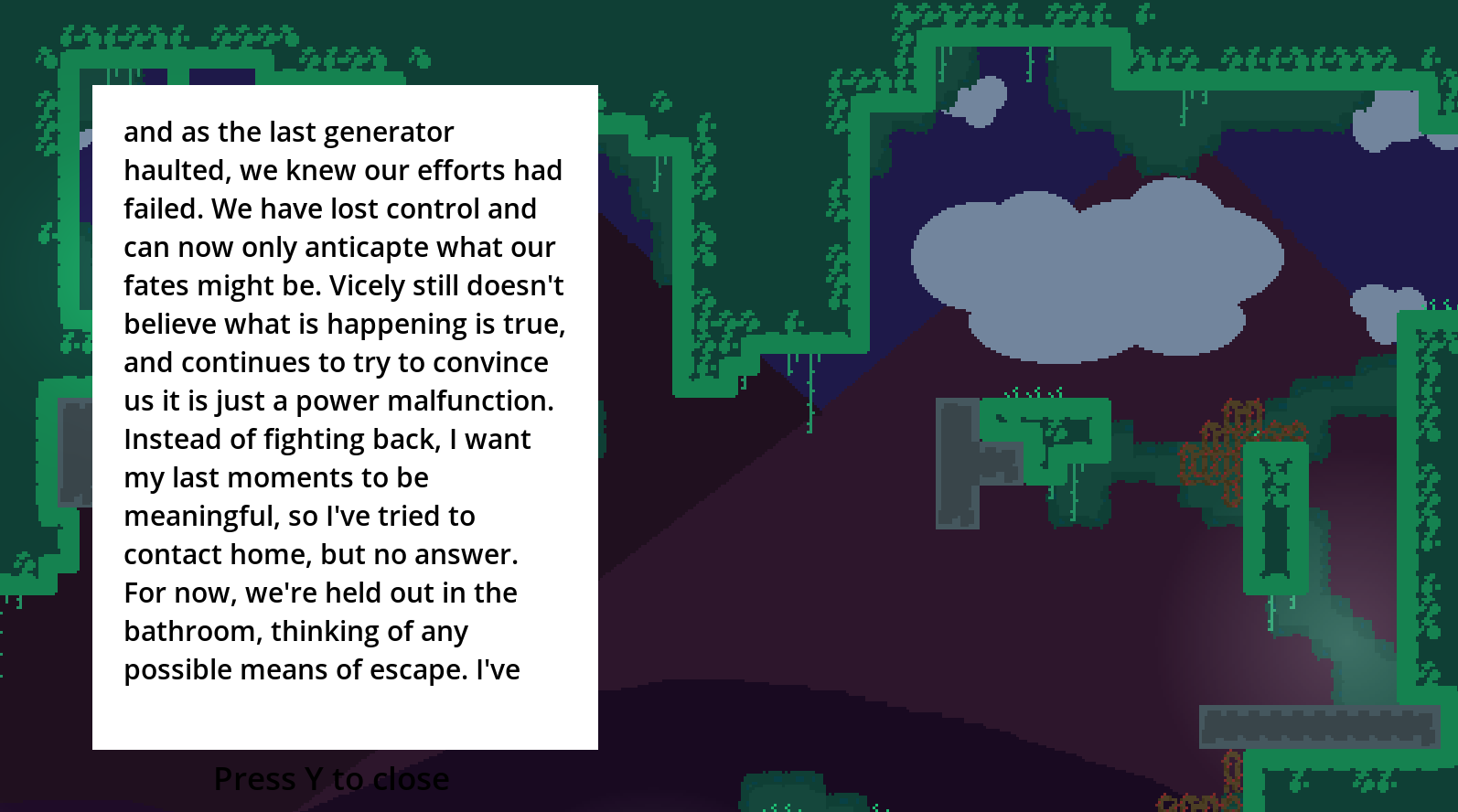
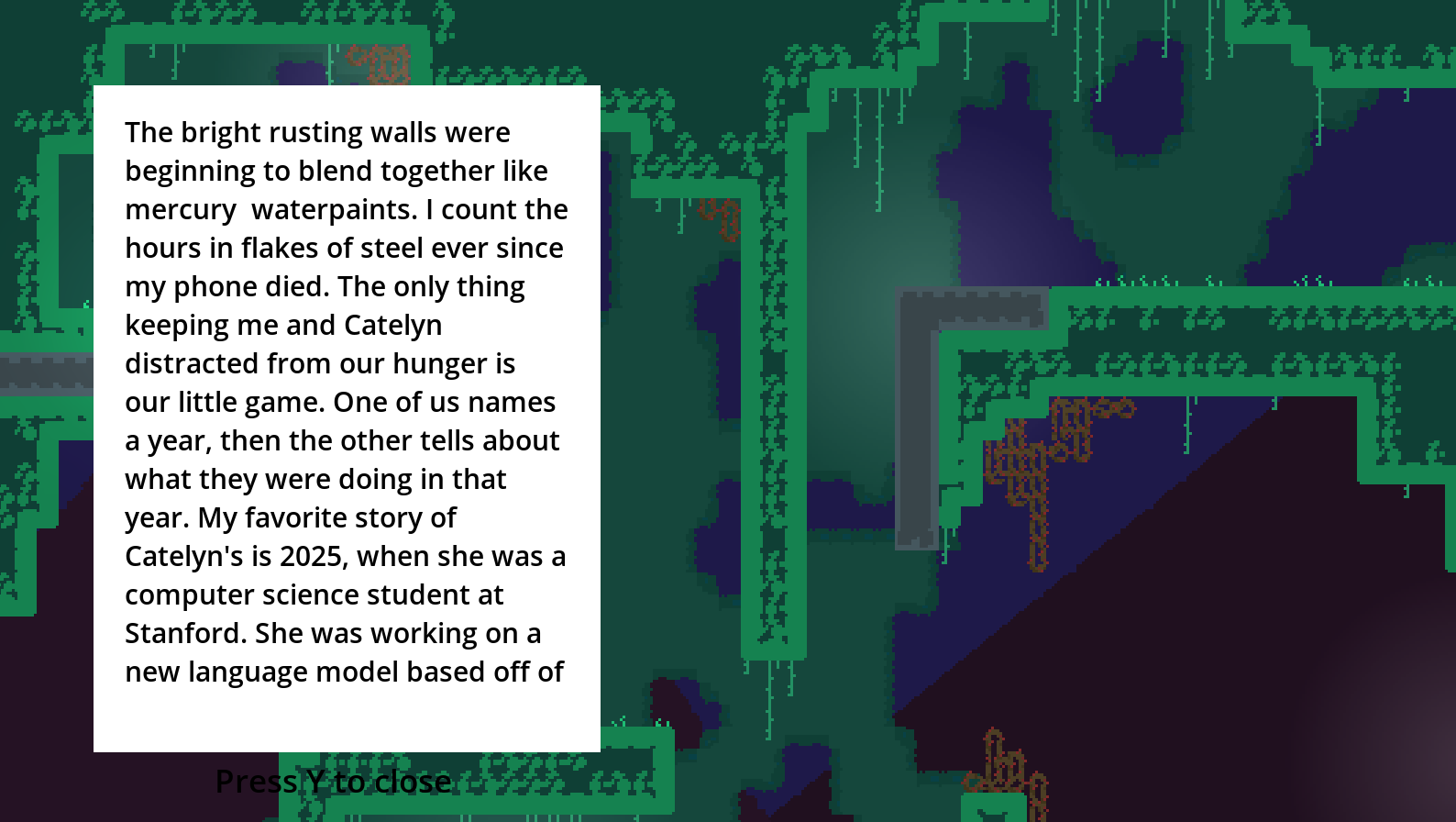
Tuning the Controls
I have found that the most important aspect in making a platformer fun is the player controller. The feel of moving the character around the world will make a break a platformer, so it is imperative that the character is addictively fun to control. For Robot Game, I had iteration upon iteration on the game feel. I experiment with different jump heights, movement speed, walljump techniques, and eventually tuned it to a point where I was personally addicted to moving the character around.
In a 2D platformer it is very important to allow the player wiggle room in the controls. Surprisingly, having a character that does exactly what the player inputs results in poor game feel. Instead, the game should predict what the player is attempting to input and do that. For example, the wall jump buffer allows the player to wall jump a fraction of a second after leaving a wall, or the coyote time allows the player to jump a fraction of a second after running off a ledge. Niceties like this go a long way in making the character control just right, and also require heaving tweaking until the feel is tuned adequately.
Above is a video showcasing the tight movement created through much iteration and playtesting.
The Robot and The Grasshopper
From the beginning this game was designed to be a statement on play itself. The robot has no reason to be climbing this volcano, so it is choosing to engage in this platforming as a form of play. This idea is inspired by the Suitsian perspective presented in Bernard Suits' book, The Grasshopper: Games, Life and Utopia. This book presents the idea that play is the representation of human struggle and triumph, and without any burdens in a utopia, humans would resort to play to find meaning in life.
Robot Game has the player character engaging in many human like behaviors: they read notes, they jump and run, and most importantly they fail and overcome. The robot's purpose isn't to play but it has recognized that a life void of play and challenge isn't a life worth living. They engage in play and other human like behaviors as a way of enriching their life with purpose.
Full Playthrough:


